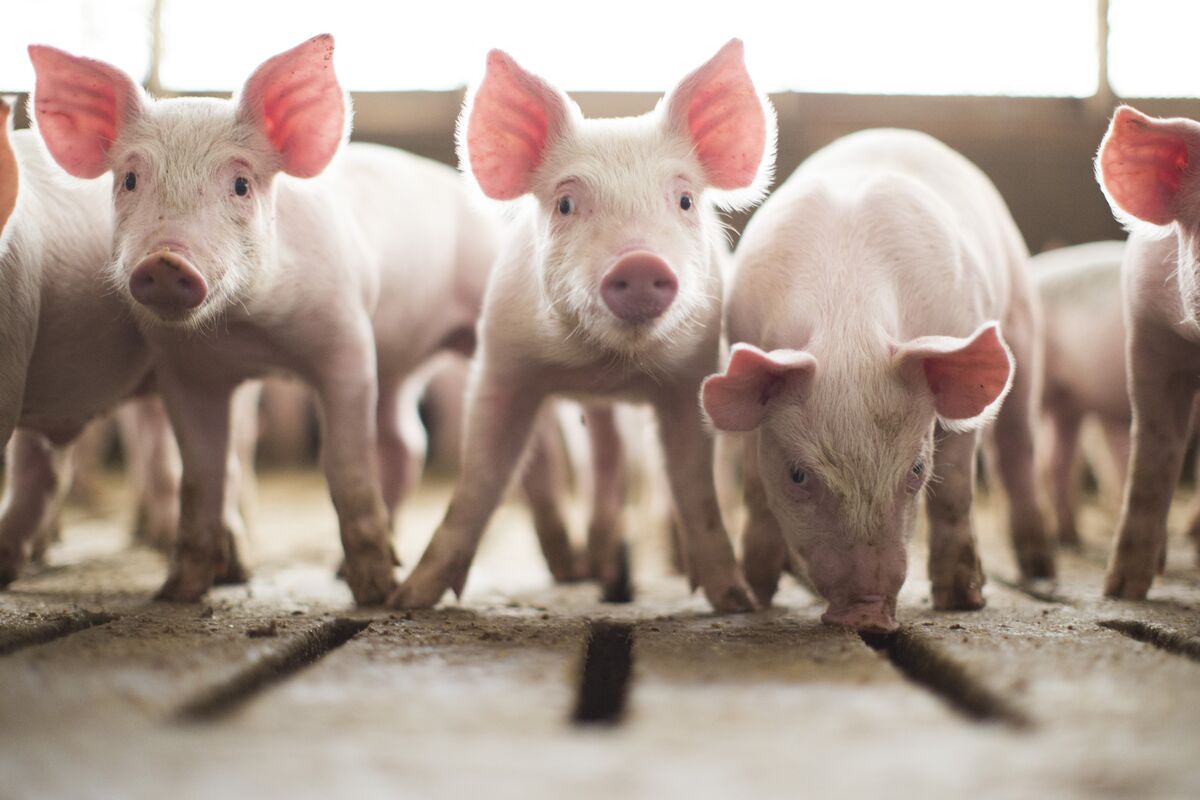Keep ahead of the threat
Stay up to date with the latest mycotoxin information by signing up to our newsletter

Mycotoxins and Pigs: A Meta-Analysis
Author: Dr. Alexandra Weaver, Global Technical Support, Alltech
Mycotoxins in feed pose a serious threat to animal health and productivity. These compounds, though often invisible, can wreak havoc on multiple organ systems, diminishing liver and kidney function, fertility, immune response, feed intake and average daily gain.
A recent publication authored by Dr. Alexandra Weaver, Dr. Daniel Weaver, Nick Adams and Dr. Alexandros Yiannikouris used a technique of meta-analysis with meta-regression to examine the detrimental effects of mycotoxin challenges in growing pigs. This meta-analysis closely examined the use of yeast cell wall extract (YCWE), as found in Alltech’s Mycosorb®, to mitigate these challenges.
What are meta-analysis and meta-regression?
A meta-analysis is a statistical technique used in research to combine and analyze the results from multiple independent studies on a particular topic. This provides a more comprehensive and reliable overview of the evidence. The process involves literature reviews, the use of inclusion and exclusion criteria, data extraction, statistical analysis, and interpretation of the results. Meta-analyses are particularly useful when individual studies may have limitations, or when there is a need for a more robust understanding.
Meta-regression is a process often used in meta-analysis to explore and quantify the relationship between study characteristics and the observed effects across a set of studies. This can help identify sources of variability and assess whether certain factors may be influencing the overall treatment effects observed.
Impacts of mycotoxins on pigs
Pigs are one of the most sensitive species when it comes to the impact of mycotoxins on health, development and productivity. The type and concentration of these toxins in the feed, along with the age and production phase of the pig, determine the degree to which the animals are affected. Young pigs and breeding sows/boars are generally the most susceptible.
Some common mycotoxins affecting pigs include:
- Aflatoxins: Produced by Aspergillus fungi, aflatoxins can damage the liver. They may also suppress the immune system, increasing susceptibility to disease, and lead to reduced growth rates and impaired reproductive performance. Aflatoxin B1 (AFB1) is particularly harmful to pigs.
- Deoxynivalenol (DON): Deoxynivalenol primarily affects the gastrointestinal tract. Pigs exposed to DON may experience reduced feed intake, vomiting, diarrhea and impaired nutrient absorption. Chronic exposure can lead to poor growth performance.
- Zearalenone (ZEA): Often seen as the mycotoxin that causes the most damage, zearalenone can disrupt reproductive function in pigs. It can induce swelling and reddening of the vulva, leading to false heats and false pregnancy. When pregnancy does occur, sows experience more abortions and stillbirths.
- Ochratoxins: These can impair kidney function, with chronic exposure potentially leading to kidney damage and reduced growth rates.
- Fumonisins (FUM): Fumonisins are associated with several health issues, including liver and kidney damage. They have also been shown to increase the severity of diseases such as porcine reproductive and respiratory syndrome (PRRS) and to decrease resistance against pathogens such as coli.
- T2-HT2 toxins: These belong to the trichothecene group of mycotoxins produced by certain species of Fusarium They are also known to have significant impacts on animal health when present in feed.
In addition, more mycotoxins are constantly being identified by researchers, and many of these may be frequent contaminants of feedstuffs as well.
Study findings at a glance
The meta-analysis reveals a significant correlation between mycotoxin exposure and diminished performance in growing pigs. Even when mycotoxin levels were below EU/US regulatory guidelines, the average daily gain (ADG) dropped by 79 grams. Notably, when at least one mycotoxin exceeded regulatory limits, the loss in ADG increased to 85 grams, accompanied by a significant reduction in average daily feed intake (ADFI), at 166 grams.
Assessment of a summary of results from 30 different treatments shows that the inclusion of yeast cell wall extract (YCWE) during mycotoxin challenges can boost ADG. Pigs fed YCWE during challenges below regulatory guidelines exhibited a significantly higher ADG, by 48 grams, compared to those fed mycotoxins alone. Even at higher mycotoxin challenge levels, when YCWE was included, there was both an increase in ADG and a tendency for an increase in ADFI.
Implications for pig producers
Understanding the potential impact of mycotoxins on pig performance is crucial. For pig producers, this meta-analysis — showing that even when these toxins fall below regulatory guidelines, there is a discernible reduction in growth performance — has significant implications, offering actionable insights to protect and even enhance animal health and performance by using solutions such as YCWE.
In summary
This research not only sheds light on the adverse effects of mycotoxin challenges on pig health and pig production but also emphasizes the potential of YCWE supplementation in overcoming them. YCWE emerges as a promising solution, offering a pathway to enhance pig performance and mitigate the impacts of mycotoxin exposure.
As we continue to navigate the intricate landscape of pig nutrition, these insights will prompt us to reconsider our strategies in the face of this growing threat.
Read the full study here.
Discover more content:
- Recognizing the warning signs of mycotoxins in pigs
- Uncovering the mycotoxin risk in straw
- Mycotoxin control: A view from the field
- The relationship between mycotoxins and pathogens in pigs







